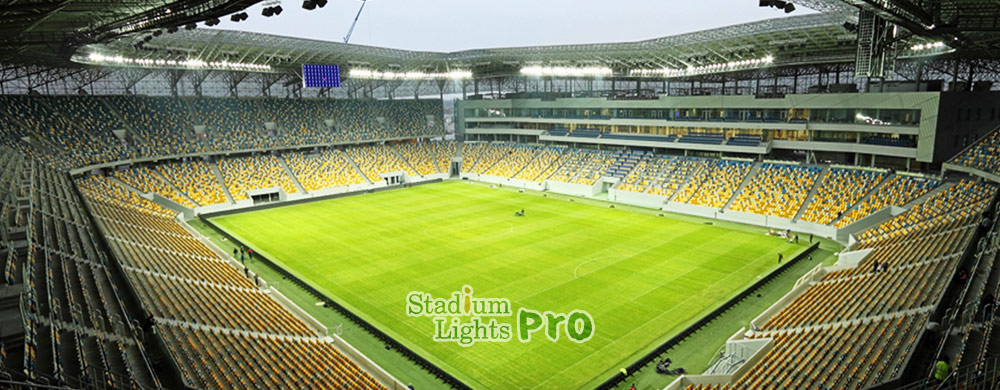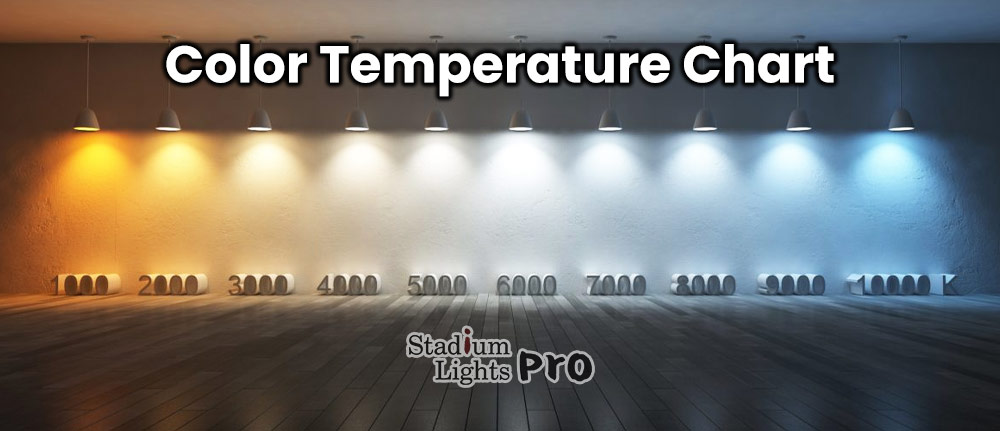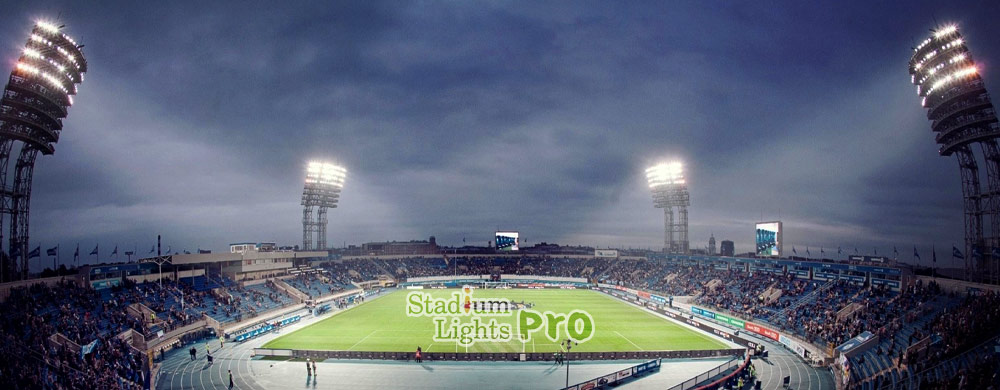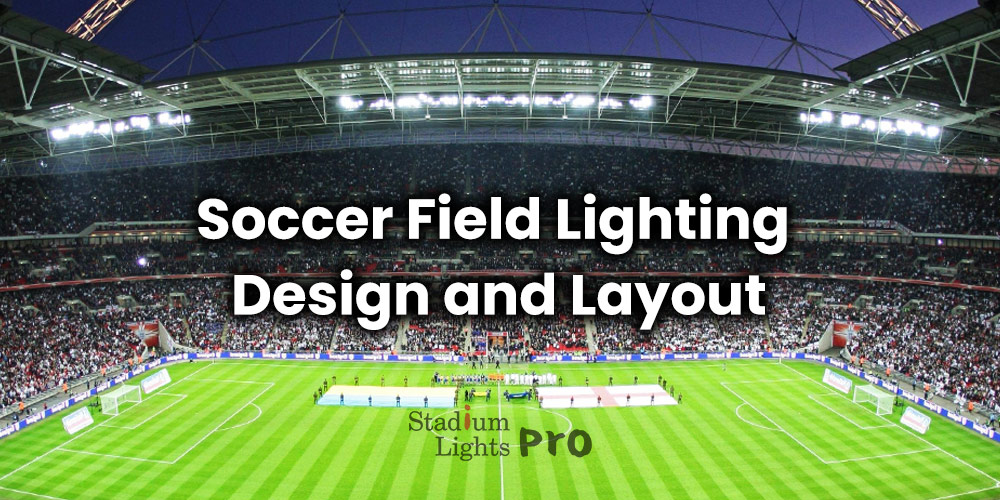This article is a comprehensive guide on soccer field lighting design and layout. It covers the importance of proper lighting for soccer fields, the factors to consider when designing and laying out lighting, and the standards and regulations that must be followed. We will also discuss the design considerations, installation and maintenance tips.
This soccer field lighting guide is suitable for anyone involved in the design, construction, or maintenance of soccer fields, including architects, engineers, lighting designers, sports facility managers, and soccer league administrators. It also can be useful for coaches, players and parents who are interested in understanding the impact of proper lighting on the sports experience.
Table of Contents
ToggleWhy is the lighting of the soccer field necessary?
Proper lighting for soccer fields is essential for several reasons. Soccer field lights –
- Ensures player safety by providing enough light for players to see and react to the ball and each other, reducing the risk of injury from collisions or falls.
- Enhances the overall playing experience by providing a well-lit field that allows players to perform at their best and for the audience to see the game clearly.
- Helps to extend the time that the field can be used by allowing games and practice to take place at night or in low-light conditions.
- Allows for broadcasting and streaming of the games in the night time which is a requirement for some professional leagues and tournaments.
Proper lighting design and layout is also necessary to comply with the standards and regulations that are set by sports governing bodies and municipalities.
What are the soccer field lighting design standards?

Soccer field lighting standards include a variety of specifications that ensure the safety and visibility of players and spectators.
Lux and brightness standard
One of the crucial specifications is the minimum level of illumination, measured in units of lux or lumen. FIFA regulations state that the minimum illumination level for international matches is 1500 lux, while the minimum level for domestic matches is 500 lux. The International Football Association Board (IFAB) also has guidelines for soccer field lighting, stating that the average horizontal illumination level should be at least 75 lux, with no point on the field less than 50 lux. There are several ways to ensure that a soccer field has enough lux level –
- Conducting a lighting survey – A lighting survey can be conducted to measure the current lux level of the field. This can be done using a light meter, which is a device that measures the amount of light in a given area. The results of the survey can be used to determine if the current lux level meets the standards set by FIFA or IFAB.
- Calculating the number of light fixtures needed – The number of light fixtures needed to achieve the desired lux level can be calculated using a lighting design software. This software takes into account factors such as the size of the field, the height of the lights, the type of lights used, and the desired lux level.
- Choosing the right type of light fixtures – High-intensity discharge (HID) lights, LED lights, and metal halide lights are all commonly used for sports field lighting and have different features and lux level.
- Regular maintenance – it is essential to ensure that they are in good working condition and that they are producing the desired lux level. This includes cleaning the lights, replacing bulbs, and adjusting the aim of the lights as needed.
How many lumens and lights does it take to light a soccer field?
The number of lights required to light a soccer field can be calculated based on the size of the field, desired lighting level, height of the fixtures, and fixture spacing. Here’s a sample calculation based on some assumptions –
Assumptions –
- Field size: 100 yards x 50 yards (approx. 110m x 55m)
- Lighting level: 300 lux
- Height of fixtures: 30 meters
- Fixture spacing: 45 meters
Calculation –
Field area = 100 yards x 50 yards = 5000 square yards = 46,450 square meters
Required Illumination = Lighting level x field area = 300 lux x 46,450 m^2 = 13,935,000 lumens
Total number of fixtures = Field area x height of fixtures / fixture spacing^2 = 46,450 / (45^2) = 44 fixtures
The number of fixtures and spacing between them can vary depending on the desired uniformity and brightness level. The calculation assumes a uniformity of 0.7. The actual number of fixtures required may be higher or lower depending on the specific requirements of the soccer field.
Color temperature requirement

Another aspect of soccer field lighting standards is color temperature. The color temperature of a light source is measured in Kelvins (K) and refers to the color appearance of the light. A lower color temperature, such as 2700K, will appear more yellow and is best suited for areas where the human eye is most sensitive, such as in residential areas. A higher color temperature, such as 5000K, will appear more blue and is best suited for areas where the human eye is less sensitive, such as sports fields.
How to choose a soccer field light with the right color temperature?
- Choosing the right color temperature – The color temperature of a light is measured in Kelvins (K) and is indicated on the product specifications. A color temperature of around 4000K-5000K is recommended for sports fields. This color temperature provides a natural-looking light that is easy on the eyes and enhances the visibility of the ball and players.
- Using a color rendering index (CRI) of 70 or higher – The color rendering index (CRI) is a measure of how well a light source reproduces colors. A CRI of 70 or higher is recommended for sports fields, as it ensures that the colors of the field, players, and ball are accurately rendered.
Color rendering index requirement
In general, a higher CRI indicates that a light source is better at reproducing colors. FIFA and IFAB, the governing bodies of soccer, do not have specific CRI requirements for soccer field lighting, but they do recommend that the lighting should be designed to provide good visibility and safety for players and spectators, and that it should be easy on the eyes. A CRI of 70 or higher is considered to be a good benchmark for soccer field lighting, as it ensures that the colors of the field, players, and ball are accurately rendered.
Yet, in some countries and regions, there may be specific regulations and standards that apply to sports field lighting, including CRI requirements. We need to be aware of and comply with any relevant regulations and standards in your area.
Light uniformity
Lighting uniformity refers to the distribution of light across the field. This is essential to ensure players have the same level of visibility and safety throughout the entire field. There are several ways to improve lighting uniformity in a soccer field –
- Proper aiming of lights – The lights should be aimed so that they are directed at the field and not at the stands or other areas. This can be achieved by adjusting the angles of the lights or by using shields or louvers to control the distribution of light.
- Use of reflectors and diffusers – Reflectors and diffusers can be used to redirect and spread the light more evenly across the field. This helps to eliminate dark spots and ensures that all areas of the field are illuminated to the same degree.
- Use of multiple light sources – Using multiple light sources instead of a single one can help to improve lighting uniformity. This can be achieved by installing lights at different heights and angles, or by using a combination of different types of lights, such as floodlights and spotlights.
- Use of proper light fixtures – Using light fixtures that are designed for sports fields can help to improve lighting uniformity. These fixtures typically have wider beam angles and can produce more evenly distributed light.
- Use of computer-aided design (CAD) software – Using computer-aided design (CAD) software can help to simulate the lighting conditions of the field and identify areas that may require additional lighting. This can be used to optimize the positioning and aim of lights, and to ensure that the field is illuminated as uniformly as possible.
Anti-glare and anti-flickering lights
Glare refers to excessive brightness that causes visual discomfort and can be harmful to the eyes. Flickering refers to the rapid changes in brightness that can cause headaches, eye strain, and seizures. Both anti-glare and anti-flickering measures can be achieved by using appropriate lighting fixtures, aiming the lights correctly, and using shields or louvers to control the distribution of light.
Glare and flickering in a soccer field can have a number of negative effects on players, coaches and spectators.
- Reduced visibility – Glare can induce glare blindness, which is when the intense light causes temporary blindness or visual disturbances. This can make it difficult for players to see the ball, other players, and the field, which can increase the risk of injury. Flickering lights can also cause visual disturbances and make it difficult for players to see the ball and other players.
- Discomfort and distraction – Glare and flickering can also lead to discomfort and distraction, which can affect player performance. This can include eye strain, headaches, and fatigue.
- Safety hazards – Glare may bring about safety hazards, particularly when it reflects off of wet surfaces such as rain, snow or dew. This can make it difficult for players to see the ball, other players, and the field, which can increase the risk of injury.
- Reduced aesthetic appeal – Flickering lights can also reduce the aesthetic appeal of the soccer field, which can negatively impact the spectator experience.
- Economic impact – They may have an economic impact by reducing the number of spectators attending games, as well as reducing the income that the stadium generates from ticket sales, concessions and advertising.
Avoid light pollution
Light pollution refers to unwanted or excessive artificial light that can interfere with the natural darkness of the night sky. We may reduce light pollution created by –
- Use full cutoff fixtures – Full cutoff fixtures are designed to direct all of the light downwards, and none of it upwards. This helps to reduce light pollution and skyglow, and it ensures that the light is directed where it is needed most, which is on the field.
- Use shields or louvers – Shields or louvers can be added to light fixtures to control the direction of light and prevent it from escaping upwards.
- Use low-glare fixtures – Low-glare fixtures are designed to reduce the amount of light that is reflected back towards the observer, which helps to reduce glare and improve visibility.
- Use automatic dimming or time-controlled lighting – Automatic dimming or time-controlled lighting can be used to reduce the amount of light that is emitted when the field is not in use. This helps to reduce light pollution and energy consumption.
- Use LED lights – LED lights are more energy efficient and they produce less heat than traditional light sources, this means they can be designed to emit less light and to have a more specific direction of light.
- Avoid over-lighting – Over-lighting is when a field is illuminated to a level that is higher than is necessary for the activity taking place. This can be avoided by properly designing and aiming the lights, and by adjusting the light levels as needed.
Soccer field lighting layout guide
Common light pole arrangement for a soccer field
Light pole arrangement refers to the placement and distribution of light poles around a specific area, such as a sports field. The layout is designed to provide optimal illumination for the soccer field while also considering factors such as aesthetics, safety, and cost. Common arrangements include corner poles, perimeter poles, center-mounted poles, and hybrid (combination) arrangements.
Corner poles

Corner pole lighting layout is a light pole configuration where poles are placed at the four corners of the soccer field, usually at the intersection of the touchline and goal line. This arrangement provides good coverage of the field but can result in shadows in the center. Corner pole arrangements are often used in smaller or recreational fields where a high level of illumination is not required.
Perimeter poles
A perimeter pole layout refers to a setup of soccer field light poles that are located around the outer edge of the soccer field, usually close to the touchline. This type of configuration is known to offer more uniform lighting throughout the field compared to the corner pole arrangement and reduces shadows in the center. This arrangement is commonly utilized in professional or high-performance soccer fields that require ample illumination.
Center-mounted poles
It refers to a setup where light poles are located at the center of the soccer field, usually arranged symmetrically. This type of configuration provides the most uniform illumination and eliminates shadows, but it can obstruct the view of spectators in the stands. This is more costly to install and maintain, but is often used in large, professional soccer fields where the highest level of lighting is needed and the spectators’ view is not an issue.
Hybrid
Hybrid pole arrangement is a light pole configuration that combines elements of perimeter and center-mounted pole layouts. In this arrangement, poles are placed along the perimeter of the soccer field and in the center, creating a balance of even illumination and minimal shadows. The hybrid arrangement provides a compromise between the even illumination of center-mounted poles and the cost-effectiveness and unobstructed view of perimeter poles. They are often used in professional soccer fields where both high levels of illumination and minimal disruption to spectators are desired.
How many light poles are needed on a soccer field?
To determine the exact number of light poles needed for a soccer field, several factors must be considered –
- Field size – The size of the soccer field will determine how much area needs to be illuminated, which will affect the number of light poles needed. Larger fields will typically require more poles than smaller fields.
- Required light level – Different soccer leagues have different lighting requirements. For example, professional leagues often require a higher light level than recreational leagues. The required light level will impact the number of poles needed to meet that requirement.
- Pole height – The height of the light poles will affect the amount of illumination that reaches the field. Higher poles will provide more coverage but also require more poles to cover the same area as lower poles.
- Pole spacing – The distance between the light poles will impact the uniformity of illumination on the field. Closer spacing will result in more even illumination but will also require more poles.
Typically, a minimum of 4 to 8 light poles is needed for a regulation-sized soccer field (100-130 feet wide and 50-100 yards long).
What is the height of the soccer field light pole?
The height of a soccer field light pole can vary, but typically it is between 30 to 60 meters (98 to 197 feet). The appropriate height of a soccer field light pole is crucial for several reasons =
- Illumination – A higher light pole provides better illumination of the entire playing surface, ensuring a well-lit playing environment for the players.
- Coverage – The taller the light pole, the greater the area it covers, ensuring the entire playing field is evenly lit and reducing the risk of shadows and dark spots.
- Safety – A higher light pole reduces the risk of the lights being hit by the ball or players during play, providing a safer playing environment.
- Viewing experience – Higher light poles also improve the viewing experience for spectators, allowing them to see the action on the field more clearly.
How many lights are there on a soccer field light pole?
The number of lights on a light pole can vary depending on the size of the soccer field, the lighting requirements, and the specific light pole being used. However, it is common to have between 8 to 16 lights per light pole.
Having an appropriate number of lights per light pole is crucial for ensuring a well-lit playing environment for the players. If there are too few lights, areas of the field may be too dark and players may struggle to see the ball. On the other hand, if there are too many lights, the bright lights may create shadows, which could obstruct the players’ vision and cause discomfort.
The specific number of lights needed for a soccer field is determined by the lighting level requirements, which specify the minimum level of illumination required for the field to meet international standards for a soccer match.
High-intensity discharge (HID) lamps, such as metal halide or sodium vapor lamps, are commonly used in soccer field lighting. These types of lamps emit a bright white light that provides excellent illumination and are energy-efficient, making them a popular choice for sports lighting.
Another factor to consider when choosing the number of lights per light pole is the design of the pole itself. The design should take into account the height of the pole, the orientation of the lights, and the beam spread of the lights to ensure that the light is directed where it is needed.
What kind of lights are used in soccer stadiums?
Most modern soccer stadiums use LED lights for their illumination. LED lights offer high energy efficiency, long lifespan, fast switching on/off capability, low heat emission and customizable color options. These features make LED lights an ideal choice for illuminating large soccer stadiums for both live games and broadcasting purposes. However, we can also consider using other types of light sources.
| Type of soccer field lights | Pros | Cons |
| LED | Energy efficient, long lifespan, fast switching on/off, low heat emission. | High initial cost, color rendering may be inadequate for broadcast. |
| Metal halide | High initial cost, warm up time required, frequent replacement of bulb required. | High initial cost, warm up time required, frequent replacement of bulb required. |
| High-intensity discharge | High brightness, efficient, durable. | Large size, high heat emission, frequent replacement required, warm-up time needed. |
| Fluorescent | Energy efficient, low initial cost, fast warm up time. | Short lifespan, low brightness, frequent replacement required. |
| Solar-powered | Energy efficient, eco-friendly, low maintenance. | Depends on weather conditions, limited brightness, limited operating time. |
Common issues when designing and arranging soccer field lighting
Designing a soccer field lighting system is a complex process that requires careful consideration of various factors such as energy efficiency, uniform illumination, weather resistance, maintenance, and cost.
One of the main problems associated with soccer field lighting is glare. This occurs when the light from the fixtures is directed towards the eyes of spectators, players, or referees, causing visual discomfort or even temporary blindness. To minimize glare, we may place the lights high above the field and direct them away from the eyes of those on the ground. Additionally, using fixtures with shielding or hoods can also help to reduce glare by preventing direct light from reaching the eyes.
Another problem is uneven illumination, which can cause difficulties for players in seeing the ball or even cause accidents. Uneven illumination is often caused by improper beam distribution or aiming of lights. To ensure uniform illumination, we can use fixtures with proper beam distributions and to aim the lights correctly. A well-designed lighting system should provide consistent and even illumination across the entire field.
Energy efficiency is another factor to consider in soccer lighting design. High energy costs can be a major burden on the operation of the field, and can negatively impact the overall budget. To reduce energy costs, it is recommended to use LED lights, which are more energy-efficient and have a longer lifespan compared to traditional lights. Furthermore, choosing fixtures that are designed for energy efficiency can also help to lower energy costs and reduce the overall operating expenses.
Maintenance is a crucial aspect of any lighting system, and soccer fields are no exception. Fixtures can become damaged over time, and bulbs can burn out or become dim. To ensure the lights are always functioning properly, regular maintenance is required. This can include cleaning the fixtures, checking for damaged wiring, and replacing broken or burned out bulbs. Prompt attention to any issues can help to prevent larger problems from developing, and ensure the lights remain operational.
Shadows can also be a problem for soccer field lighting design, particularly for players trying to see the ball. Shadows can be caused by a lack of lights or by lights being positioned incorrectly. To minimize shadows, we may use enough lights and to position them properly. A well-designed lighting system should provide consistent and even illumination across the entire field, with minimal shadows.
Conclusion
A well-designed lighting system will enhance the playing experience for players, ensure the safety of everyone involved, and reduce operating costs. By addressing issues such as glare, uneven illumination, shadows, and light pollution, and by choosing energy-efficient fixtures and materials, soccer fields can have a lighting system that meets the needs of all stakeholders while being cost-effective. A professional lighting design consultant can provide valuable assistance in ensuring that the soccer field lighting system is designed to meet the specific needs and budget of the field.
If you’re looking to enhance the lighting of your soccer field, our team of experts is here to help. We offer a comprehensive and personalized soccer field lighting design and layout consultation, completely free of charge. Our team will work closely with you to understand your unique needs and requirements, and provide you with customized solutions to improve the lighting of your field. Whether you’re looking to reduce glare, ensure uniform illumination, or minimize shadows and light pollution, our team has the expertise and experience to help you achieve your goals. So why wait? Contact us today and take the first step towards a brighter and better-lit soccer field.

